Best Medical Alert Systems of 2024
Our experts rated the leading medical alert systems on the market. Learn which of these life-saving devices made our best-of 2024 list.
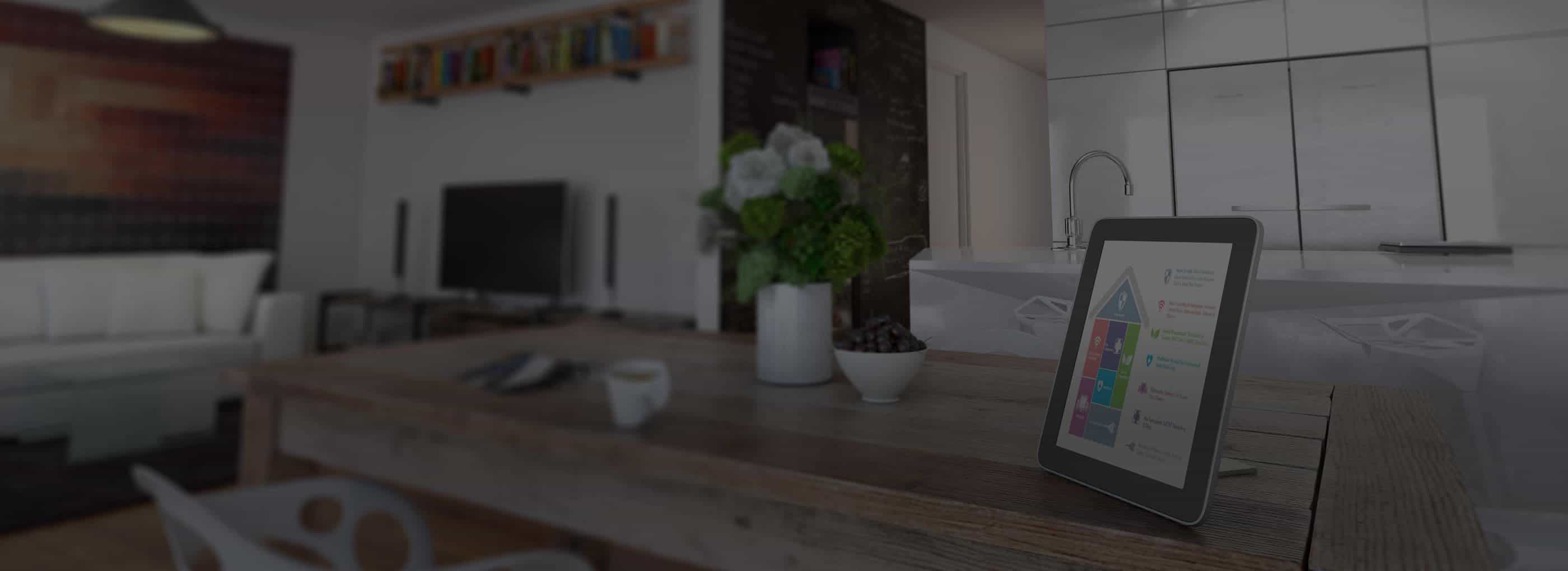
SafeHome.org may receive compensation from some providers listed on this page. Learn More
We may receive compensation from some providers listed on this page. Learn More
Best Overall
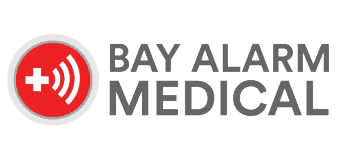
Bay Alarm Medical offers both high quality technology and products, with rapid response and service. Their cellular system with GPS is the best on the market and they’re the only company offering an in-car monitoring solution.
Best Fall Detection

Medical Guardian offers a high-end product suite at above average prices. The company has an A+ BBB rating and thousands of positive customer reviews. Recently they’ve developed a smart watch with advanced monitoring capabilities.
Best Security Company Offering

ADT Health keeps things simple with three plans to choose from. Their mobile units comes with GPS location tracking with optional fall detection. We just wish the device was more discreet, but otherwise ADT Health makes the grade.
Best Overall
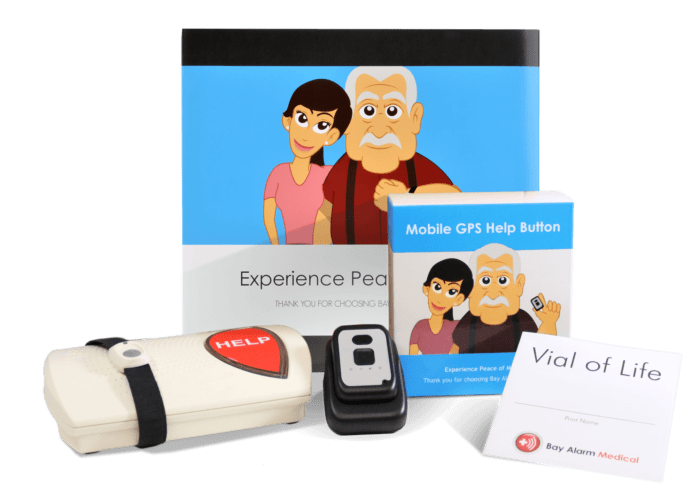
Best Fall Detection
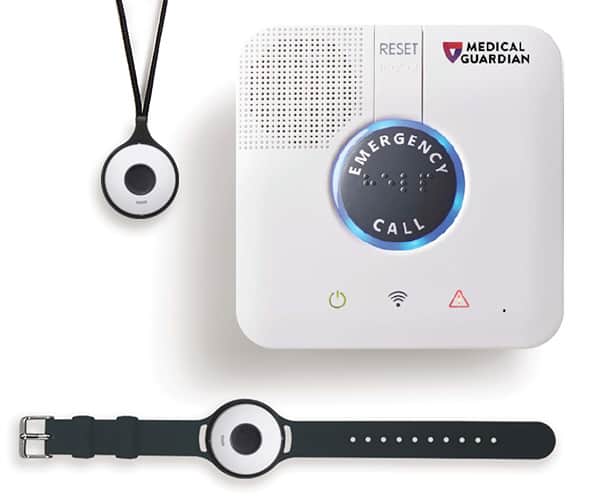
Best Security Company Offering
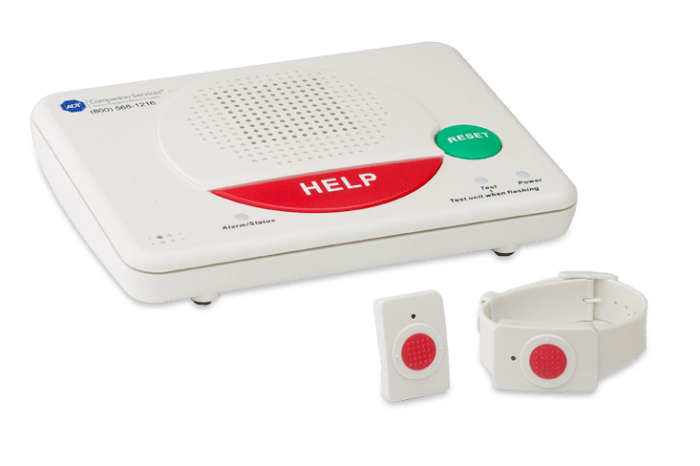
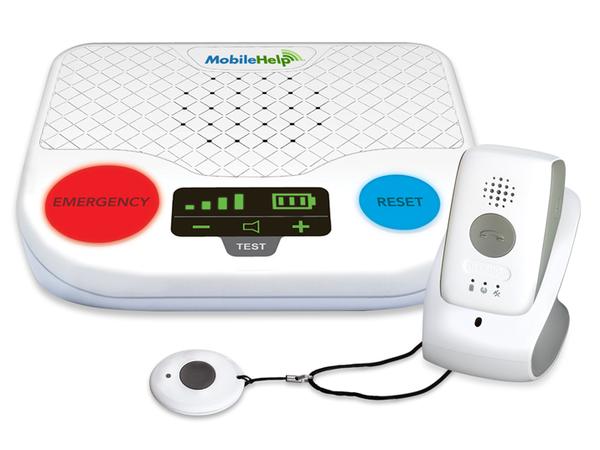
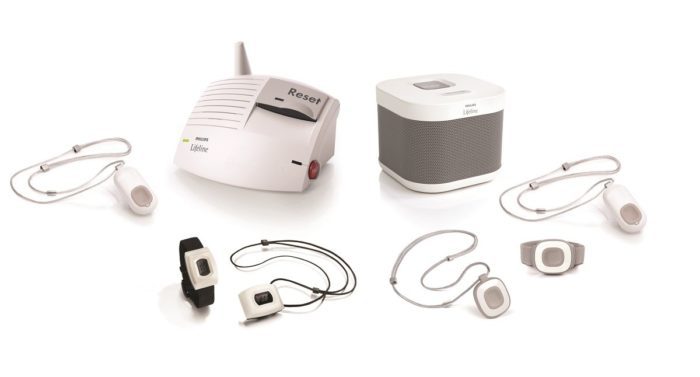
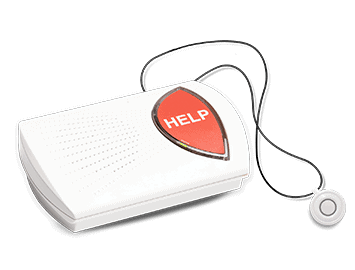
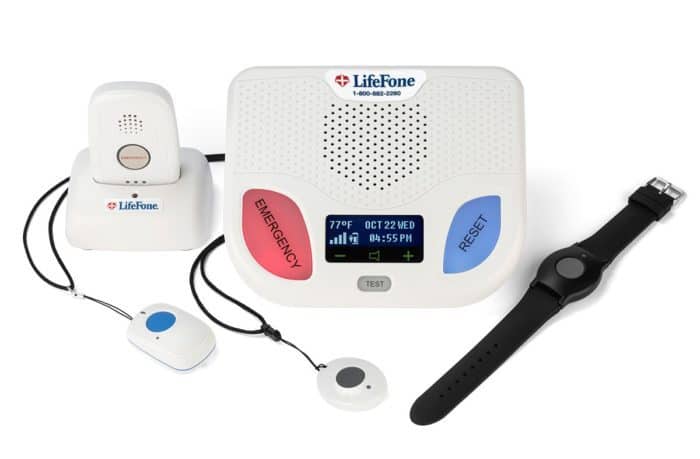
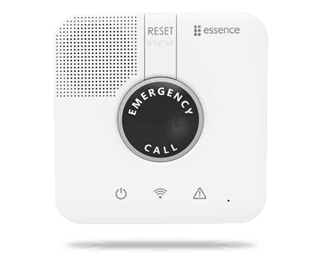
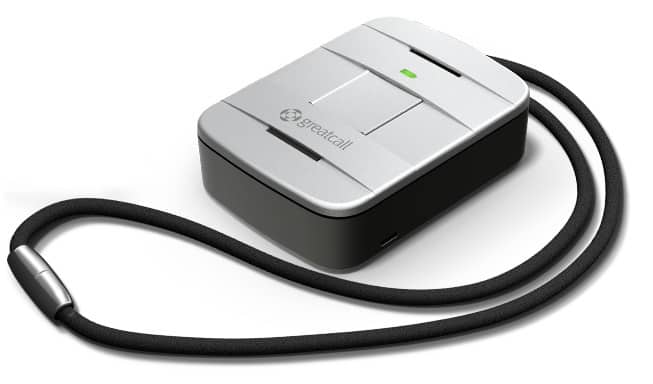
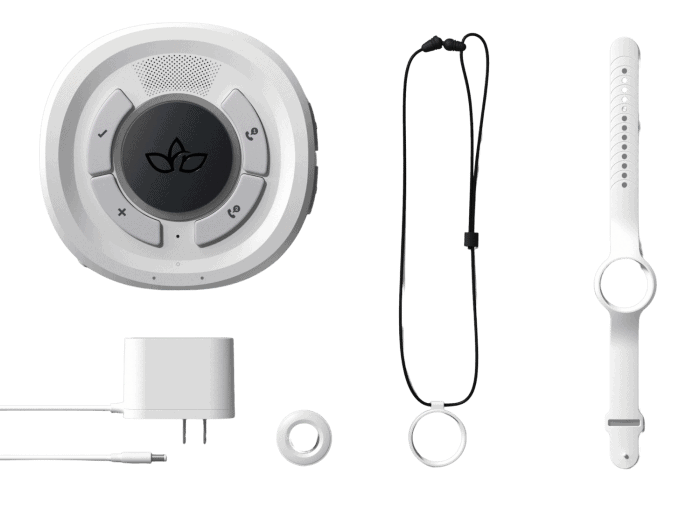
Medical Alert Systems — sometimes called Personal Emergency Response Systems — play an important role in keeping seniors and those with medical issues safe and independent, and many families rely on them every day.
The majority of these systems consist of wearable devices that will send a notification to an alert center when a button is pressed or, in some models, if a fall is detected. They play an important role in the lives of seniors who want to age in place, but would benefit from an added layer of protection. The right system will help you or your loved one age with dignity and grace, but selecting the right system can be a little tricky.
First, it’s important to know what best suits your loved one’s needs. There are, for instance, sleek-looking medical alert smartwatches like Medical Guardian’s recently released MGMove. These highly portable devices give active seniors access to emergency help whenever needed.
On the other side of the coin, a lot of medical alert systems provide seniors with around-the-clock monitoring at home. AloeCare Health’s Smart Hub is an example, an at-home system that keeps track of the health and safety of less-mobile older adults.
Cost is another factor to consider. Companies charge in varying ways such as requiring you to purchase equipment up front or leasing it as part of their monthly fees. Other differences to look out for are landline-only options versus cellular connections, and price plan differences when you pay monthly, quarterly, or annually.
We’ve spent hundreds of hours testing the most popular alert systems on the market, and we revisit products regularly so we can keep you updated on the latest technology and the latest prices. For instance, check out Bay Alarm Medical’s new app providing caregiver location detection on some devices.
Use the following guide as you shop to find the best medical alert match for yourself or your loved one. Let’s get started!
| System |
Bay Alarm Medical

|
Medical Guardian

|
ADT Medical Alert System

|
MobileHelp

|
Lifeline

|
Medical Alert

|
LifeFone

|
GetSafe

|
Lively

|
Aloe Care Health

|
|---|---|---|---|---|---|---|---|---|---|---|
| Ranking |
1st

|
2nd

|
3rd

|
4th
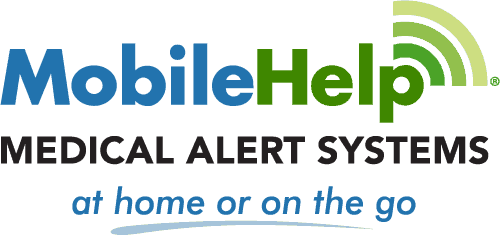
|
5th

|
6th

|
7th

|
8th

|
9th

|
10th

|
| SecureScore™ | 9.3 | 9.1 | 8.9 | 8.7 | 8.2 | 8.3 | 8.4 | 7.9 | 7.8 | 8.6 |
| Best Accolade | Best Overall | Best Fall Detection | Best Security Offering | Best Range | Best Brand Recognition | Best Response Center | Best Customer Service | Best In-Home | Best Mobile Options | Best for Caregivers |
| Monthly Cost | Starting at $24.95/mo | Starting at $32.00/mo | Starting at $37.99/mo | Starting at $29.95/mo | Starting at $29.95/mo | Starting at $19.95/mo | Starting at $24.95/mo | Starting at $29.95/mo | Starting at $24.99/mo | Starting at $29.99/mo |
| Warranty | Lifetime | Yes (optional protection plan available) | Lifetime | Yes | 1-Year | Lifetime | Lifetime | 1-Year | None | Yes |
| Read Review | Bay Alarm Medical Review | Medical Guardian Review | ADT Medical Alert Review | MobileHelp Review | Lifeline Review | Medical Alert Review | Lifefone Review | Getsafe Review | Lively Review | Aloe Care Health Review |

Bay Alarm Medical is our favorite provider for a number of reasons. They offer affordable equipment with powerful protections at reasonable prices. That right there covers about 90 percent of most families’ checklists when shopping for a medical alert system.
And they’re always innovating — adding new or updated products to their lineup to meet customer demand. For example, in 2022, they replaced their traditional on-the-go device with the SOS Mobile, an updated on-the-go version. It is sleek, lightweight, and offers the choice of a Verizon or AT&T 4G connection. Bay Alarm also offers the SOS Smartwatch, popular with active older adults who want a discreet device with extra features.
Bay Alarm recently added a free app to their offerings. It includes caregiver tracking for the SOS Mobile and SOS All-in-One. It also allows you to manage contact information and account status, regardless of the system that you use.
More reasons to like Bay Alarm Medical? All of their products are made in the U.S.A, plus they have been family owned and operated since 1946. Their three accredited, redundant call centers are TMA Five Diamond Certified. They offer multiple equipment packages. Home systems actually come with free equipment, so all you pay for is the monthly monitoring fee. At the other end of the spectrum, you can get an SOS Smartwatch for $111. The company frequently offers significant discounts when combine different products and packages.
For quick reference, here’s a breakdown of Bay Alarm Medical’s products, their features, as well as their costs. Keep in mind, though, right now Bay Alarm Medical is offering 20 percent off the cost of their on-the-go devices, and they’ll throw in free shipping and one month of free monitoring.
| Bay Alarm Medical Equipment | What’s in the Box | Equipment Price | Monthly Monitoring Price |
|---|---|---|---|
| SOS Home |
|
Free | $24.95 – $39.95 |
| SOS All-In-One |
|
$119.00 | $39.95 – $49.95 |
| SOS Mobile |
|
$99.00 | $34.95 – $59.95 |
| SOS Smartwatch |
|
$159.00 | $34.95 – $59.95 |
FYI: Right now Bay Alarm Medical is offering 30 percent off all their mobile devices and will throw in free shipping and a free month of monitoring. And keep in mind, if you’re shopping for a medical alert system on a budget, we’ve compiled a list of the best affordable systems.
| Connectivity | Landline and cellular |
|---|---|
| Fall Detection | $10/month |
| In-home Range | Up to 1,400 feet |
| Battery Backup | Up to 32 hours |
| GPS Option | Yes |
| Money-back Guarantee | 30-day |

There are a lot of reasons to like the Medical Guardian alert system, but one of the primary benefits is that they don’t require any long term contracts. This is good news for families who are on the fence about using one of these services and want to try it out before they commit.
They also have flexible plans and affordable prices, too. Medical Guardian has two different offerings for seniors who spend most of their time at home. The first option, MGClassic, costs $29.45 per month and uses a landline connection. That’s an affordable price if your home has a landline connection. Moreover, the equipment is leased, so there are no upfront equipment fees.
The second slightly more expensive option, MGHome Cellular, costs $34.95 per month. The advantage of this connection is its dual connection. It uses both Wi-Fi and cellular signals to send alerts, so it can still call for help even if either your Wi-Fi is down or your cellular connection is spotty. However, it requires a $149.95 equipment fee.
Both systems have a 1,300- to 1,400-foot range, which means the help button has to remain within those ranges to the base station to work. And compared to other medical alert systems, those are pretty good numbers.
For adults who like to be out and about, Medical Guardian offers three options: the MGMini, the MGMini Lite, and the MGMove, with monthly monitoring costs that range from $39.95 to $44.95 per month. In addition, all systems are GPS-enabled with Wi-Fi and 4G connectivity. All the on-the-go systems have unlimited range. You can use them at home or outside, and no matter where you go, you should be covered.
The MGMove is particularly interesting, because it’s a smartwatch with medical alert capabilities. Among its features are the ability to set up medication reminders, messaging, physical activity monitoring, and emergency calling. The downside, of course, is that it needs to charge, but the watch can run up to a full day on a single charge, even with heavy usage. You should also know that the watch itself carries a pricetag of $200. However, Medical Guardian is continually running specials, so you may be able to cut into that price significantly if you look for their current specials before you commit.
| Connectivity | Landline, cellular, and Wi-fi |
|---|---|
| Fall Detection | $10/month |
| In-home Range | Up to 1,400 feet |
| Battery Backup | Up to 32 hours |
| GPS Option | Yes |
| Money-back Guarantee | None |

ADT has been in business for 140 years, they have over 8 million customers, 200 locations throughout the U.S. and Canada, and a rock-solid reputation to back up their products and services.
ADT Health keeps it simple with three plans: the Medical Alert Basic (in-home), Medical Alert Plus (in-home), and On-The-Go (mobile). There is no charge for the equipment; however, the monthly monitoring charges range from $29.99 to $39.99 per month.
Their in-home systems feature a temperature sensor not seen on most base units offered by other providers. However, the range between the base unit and help button is low compared to other brands. The Medical Alert Basic has a 300-foot range, and the Medical Alert Plus has a 600-foot range.
The On-the-Go Medical Alert System centers around a basic mobile device that gets the job done. It includes two-way talk, GPS location detection, and an optional fall detection pendant that costs $9.99 per month, a price consistent with most other brands.
Customer-friendly policies are one of ADT Health’s strengths. This includes their ForeveRate, a price-lock guarantee on monthly fees, no contracts, no hidden fees, and a lifetime warranty.
We should point out that ADT Health medical alert system add-ons are limited. They offer additional waterproof wearables (white or black waterproof wristband or pendant help button), the fall detection service, a leather case for the mobile device, and a lockbox.
| Connectivity | Landline and cellular |
|---|---|
| Fall Detection | $11/ month |
| In-home Range | Up to 600 feet |
| Battery Backup | Up to 30 hours |
| GPS Option | Yes |
| Money-back Guarantee | 6-month |

MobileHelp offers all the key features you’d expect from any medical alert system — and then some — all for an affordable price. MobileHelp Solo costs $41.95 per month, and if you’re looking to protect more than one person, Mobile Duo offers the same features for $46.95. For context, this is industry-standard pricing.
So what stands out about MobileHelp in particular? It’s a good solution for your elderly loved ones who like to remain active. If they’re working in the garden, checking the mail, or out washing the car, the 1,400-foot effective range for the landline system (1,300 feet for the cellular) means precious peace of mind for you and autonomy for your loved ones. Features include two-way talk, location tracking, and fall detection. Or, invest in the MobileHelp Micro device and give them the freedom to go anywhere with 24/7 protection.
While we weren’t huge fans of the design of the system itself — some of the equipment is a little boxy and indiscreet — the function mostly makes up for the form. If you’re looking to protect active aging adults, MobileHelp should definitely be on your shortlist.
| Connectivity | Landline and cellular |
|---|---|
| Fall Detection | $10/month |
| In-home Range | Up to 1,400 feet |
| Battery Backup | Up to 48 hours |
| GPS Option | Yes |
| Money-back Guarantee | 30-day |

Lifeline has been in business for 45 years and was the original medical alert services provider in the industry. They have been one of the top medical alert providers over the years, and they still are today. They were originally called Philips Lifeline and were run by hospitals and other healthcare facilities. However, in 2006 they were acquired by Lifeline Systems which is headquartered in Framingham, Massachusetts.
Lifeline offers three different plan options; two at-home plans and one on-the-go plan, which all range from $29.95 per month to $49.95 per month. There’s a one-time, $50 activation fee with each at-home plan, and the on-the-go plan has a $99.95 device fee.
All plans come with 24/7, 365 monitoring, month-to-month billing, and a personalized response plan. The company’s 12-second response time is among the best in the business. You will be provided with a base unit and a medical alert pendant with both at-home plans. The GoSafe 2 comes with a charger and a medical alert pendant. Lifeline has several options that can be added on, such as the AutoAlert fall detection, which is included on all plans except the HomeSafe Standard. You can add on the Automated Medication Dispensing Service for $59.95 per month as well.
| Connectivity | Landline and cellular |
|---|---|
| Fall Detection | Included in some plans |
| In-home Range | Up to 800 feet |
| Battery Backup | Up to 30 hours |
| GPS Option | Yes |
| Money-back Guarantee | 30-day |

Medical Alert is another provider that offers the flexibility of month-to-month payments without any hidden fees or long-term contracts. They offer at home and mobile plans, and can be installed using a cellular connection or a landline.
These plans start at $19.95 per month. As with most medical alert systems, fall detection costs extra: $10.00 per month. At-home systems come with a base unit, a neck pendant, and a wristband at no charge beyond the monthly subscription rate. There’s no charge for mobile equipment either, which includes a charging base, handheld device, and interchangeable wrist/neck button, but the monthly rate is higher: $47.95 per month.
Medical Alert has redundant CSAA Five Diamond Certified response centers that offer 24/7 monitoring and bilingual operators in 140 different languages. However, they don’t have any available add-ons (except for the fall detection) as other medical alert services do.
Additionally, their products and services are easy to use. All you have to do once you receive your system is plug the base unit into a wall outlet, connect the phone cord (if you are using a landline system) and turn it on. If you should ever need assistance, you simply push the button and you will be immediately connected to a trained operator who will assist you or send help if needed. The on- the-go system is just as easy to use. You simply plug in the charger and push the help button should you need assistance. And, the on- the-go help devices are equipped with GPS location services should you ever need assistance, become disoriented, or don’t know where you are. Someone is always there to help.
| Connectivity | Landline and cellular |
|---|---|
| Fall Detection | $10/month |
| In-home Range | Up to 800 feet |
| Battery Backup | Up to 30 hours |
| GPS Option | Yes |
| Money-back Guarantee | 30-day |

LifeFone offers five systems: two at-home, two on-the-go, and one hybrid. Their at-home landline and cellular systems couple a unique feature, temperature sensors, with great range — 1,300 feet. These sophisticated systems come with a slightly above average price for at-home systems. Monthly fees start at $29.95.
Lifeone packs a number of great features into their on-the-go systems, the VIP Active and the VIPx. Both offer outstanding battery life–up to 30 days with the VIP Active and up to 16 days with the VIPx. The VIPx comes with the option to add the Caregiver app. The app tracks your location, keeps up with your activity throughout the day, and even logs your first motion each morning. The downside is that these features aren’t cheap. LifeOne’s on-the-go system monthly fees start at $43.95 per month.
While monthly fees may be high, so is customer service. You can count on talking to a real person any time you need help. Plus, you will be getting a break in other areas. You will not be charged an equipment fee for LifeFone’s high-tech devices. In addition, you will not find any hidden fees, and you will receive a 30-day, money-back guarantee trial period. Plus, the company is always offering special deals. Right now you can get a month of service, plus free activation and free shipping when you sign up for any of the company’s plans.
| Connectivity | Landline and cellular |
|---|---|
| Fall Detection | $5/month |
| In-home Range | Up to 1,300 feet |
| Battery Backup | Up to 42 hours |
| GPS Option | Yes |
| Money-back Guarantee | 30-day |

GetSafe is a new product for seniors offered by Bay Alarm Medical, one of our highest-rated alert systems. We think GetSafe is the perfect solution to aging safely at home, without having to wear a necklace pendant or wristband around the home. This system uses a 4G LTE base unit (powered by AT&T cell towers, no landline required) with built-in two-way talk. If you or your loved one needs help, say “Call 9-1-1-” two times and an emergency response agent will be on the line to help.
GetSafe equipment costs start at $79 for a base unit, a voice-activated wall button, and a lanyard help button. But you can spend as much as $279 for multiple voice-activated buttons and traditional wall buttons. Monitoring will only set you back $29.95 per month, which is surprisingly affordable considering what you get.
Thankfully, GetSafe does have optional wearables, just to cover all the bases. They also offer a mobile GPS unit for an additional fee. And if you really want peace of mind, we recommend signing up with automatic fall detection — this $10 per month upgrade isn’t 100% accurate all the time, but it’s known to save lives.
All in all, we really think GetSafe brings some much-needed innovation to the medical alert system market. And we’d definitely recommend it to our loved ones.
| Connectivity | Cellular |
|---|---|
| Fall Detection | $10/month |
| In-home Range | Up to 1,300 feet |
| Battery Backup | Up to 32 hours |
| GPS Option | No |
| Money-back Guarantee | 30-day |

Lively is unique among medical alert companies because they began as a phone company. The fact that their phones were targeted at seniors made it inevitable that they would eventually offer medical alert devices as well. The cool thing is that you can use your phone to get full-service monitoring. No need for extra equipment. Your Jitterbug Smart3 or Flip2 give you all the advantages of monitoring and all the features of a smartphone. You can text, email, check the news, and surf the web, but you’re completely protected in case of a medical emergency.
Of course, if you want to go the more traditional route, Lively has you covered. The company recently introduced a single emergency button you can wear on a lanyard. Even with this device, though, you’re not tied to a home base or a charging station. The button takes advantage of Lively’s cellular network so wherever you go help is just a push away.
Lively is a well-known name with a great reputation when it comes to senior products and services. Lively’s traditional medical alert devices offer three Health & Safety packages that range from $24.99 per month to $49.99 per month that include features such as urgent care (access to registered doctors and nurses), a Lively Link (to stay connected with friends and family), product replacement, and fall detection depending on the package you choose. They have a wide variety of affordable accessories you can purchase as well. And, if you are in need of a mobile phone, they offer flip-phones and smartphones with a 5Star emergency button and other advanced features like brain games and voice typing.
Price Alert: Right now Lively’s Mobile+ plan, which provides you with protection at home and on the go, is on sale for 50 percent off. For just $24.99, you get a waterproof, wearable mobile device that not only lets you press a button for help 24/7, but is also capable of alerting emergency personnel when it detects a fall.
| Connectivity | Cellular |
|---|---|
| Fall Detection | Included in some plans |
| In-home Range | N/A |
| Battery Backup | Up to 82 hours |
| GPS Option | Yes |
| Money-back Guarantee | 30-day |

Although Aloe Care Health is relatively new-to-market, you definitely don’t want to write them off. While you have to be careful before investing in younger companies, the truth is that these companies often offer more features at a better price. After all, they’re trying to disrupt the market. Aloe Care has created a niche for itself, targeting families that want or need functions for both the older adult and family caregiver. We recently tested their “Essentials Plus” package and were thoroughly impressed by the advanced capabilities.
Aloe Care Health offers 24/7 coverage with an automatic fall detection option (as expected), but the features and tech really take off from there. The well-designed caregiver app allows you to check in on your loved one, with real-time updates on their activity/movement and even their air-quality. And with voice-activated help calls, seniors can access the emergency helpline using only their voice.
Aloe Care Health offers four different options, including an on-the-go system and three at-home packages that all include an advanced base unit. Aloe Care Health prices start at a reasonable $24.99 per month and range up to $49.99 monthly (for a bundled at-home plus on-the-go system), which is right in line with the industry average. The new Mobile Companion Go will cost you just $29.99 per month, which is a great price for an on-the-go system. However, keep in mind that you will need to purchase the equipment upfront, which will cost you between $100 and $350 — not exactly cheap. But still, we think Aloe Care Health is a great option for seniors who could use a little extra care and coverage.
| Connectivity | Cellular |
|---|---|
| Fall Detection | Included in some plans |
| In-home Range | 200 feet |
| Battery Backup | Yes |
| GPS Option | Yes |
| Money-back Guarantee | 30-day |
Our senior care experts personally test, review, and recommend systems that are the best in their category. Everything we publish is 100% unbiased and objective.
And we would never recommend products that we don’t truly believe in. This means you get an expert in your corner to guide you and help you find an alert system that makes sense for your budget and lifestyle.
Our goal is to remain a top resource that helps seniors live more independently with peace of mind. And we can only accomplish this if readers like you trust our integrity and ethics. So we always strive to remain:
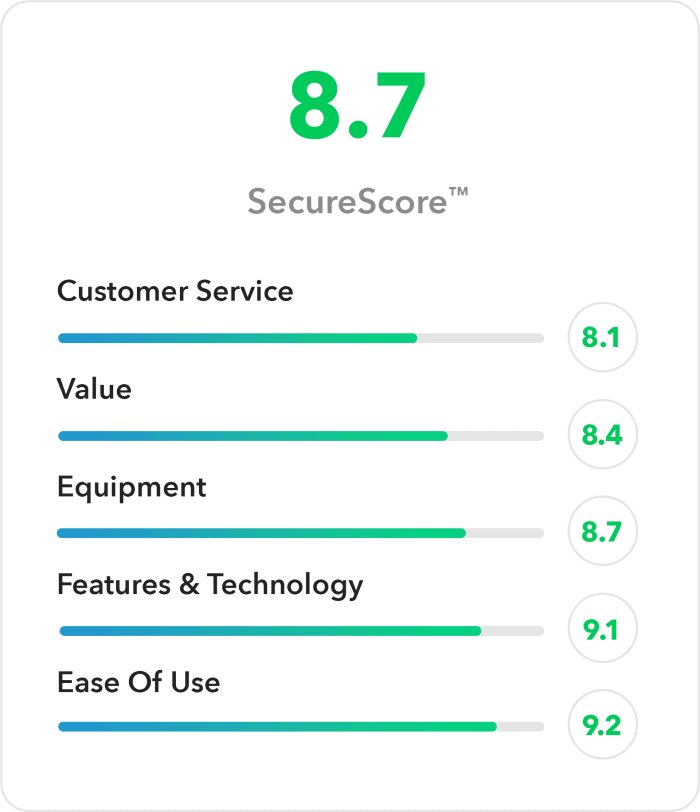
Our SecureScore™ rating system
You might already know that our research and testing results in our proprietary SecureScore™. This score covers 5 important categories: Customer Service, Value, Equipment, Features and Technology, and Ease of Use. In other words, we do our best to get a full understanding of what it’s like to actually use the best alert systems on a daily basis. Then we share our findings with you! We do the homework so that you don’t have to.
It’s no secret that there are lots of medical alert systems to choose from. But narrowing down your options and making a decision doesn’t have to be complicated. In fact, it should be easy! That said, you’ll want to look out for little things that can turn into big-time deal-breakers.
For instance, not all help buttons are waterproof (there goes safe showering!). And did you know that some only have a 300 ft. range from the base station, while others work up to 1,300 ft. or more. Also, certain alert systems only work at home, while others work on-the-go. Don’t worry — we’re going to show you exactly what to look for in a medical alert system.
FYI: Most slip and falls happen in the bathroom, that’s why we always recommend a waterproof alert system. With a waterproof device, you or your loved one can bathe or shower without sacrificing safety.
As they say, you don’t know what you don’t know! That’s why you have us. We’re going to cover features and monitoring, monthly costs and fees, customer service, and other important points you should keep in mind. So let’s dive right in.
Now, you might be tempted to go straight to the top-rated alert system on the market, place your order, and call it a day. But that could be a mistake. Why? While Bay Alarm Medical and Medical Guardian are ranked #1 and #2 on our list, you should know that each brand out there sells a handful of different devices, each meant for totally different lifestyles.
The truth is, whether the system is for you, or a loved one, which medical alert system is the best depends on how you will use it. Think about activity level and lifestyle: will it mostly be used at home? Or is the user active and out and about a lot? If you love to visit friends, go shopping and lead an active lifestyle, a mobile system like a smartwatch is recommended. But if you spend the majority of time at home, an in-home alert system is the better choice.
FYI: If you or a loved one lives with diabetes, there are a few unique features to look out for when shopping for an alert system. Learn all about it in our guide to the best medical alert devices for diabetics. It’s important to do your research up front, especially since some brands charge high prices for what you get. In our research, we found that while Life Alert’s GPS systems might work for diabetics, Life Alert costs are pretty high.
In-Home Alert Systems – A pendant alert will summon emergency response help at the push of the button. Note that the biggest advantage of in-home systems is their affordability: they range between $19.99 to $29.99 per month. But their main weakness is their short range. Some will keep you protected while you’re in your house and gardening out back, but you won’t have coverage when you leave home. So that’s something to keep in mind.
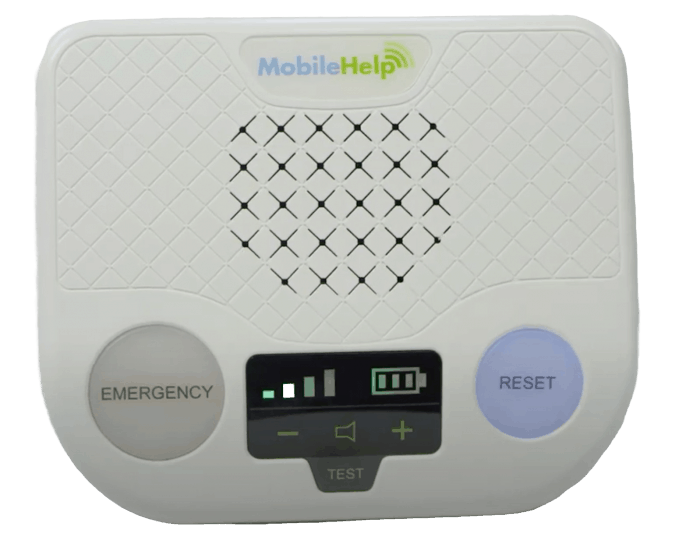
MobileHelp In-Home Medical Alert Base Station
Pro Tip: In-home or mobile alert? It’s the age-old question. And it’s the primary difference between alert systems. If you can swing the extra cost, we recommend choosing a mobile unit, especially if you or your loved one lives an active lifestyle.
Mobile Alert Systems – We think these are great for active seniors who want emergency coverage on-the-go. Instead of running off your home Wi-Fi network or landline, mobile medical alerts are powered by reliable cellular signals (just like modern smartphones!). This means you can go pretty much anywhere in the country, so long as there’s a cell signal. You can choose from bracelets, necklace pendants, and even fashion-forward smartwatches.
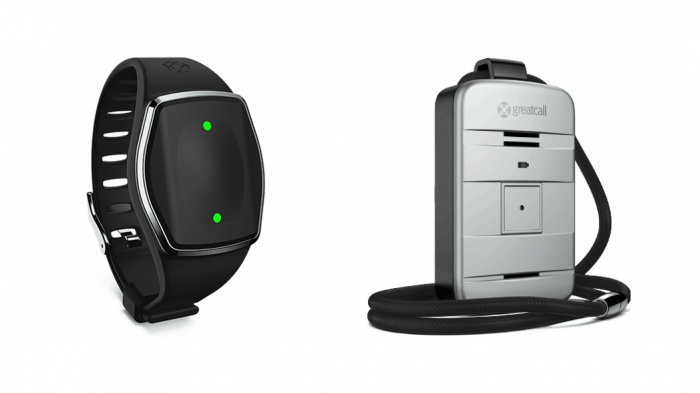
Lively Wearable 2 and Mobile Plus
One nice feature of some mobile alert systems is GPS location tracking. This allows emergency personnel to quickly locate your whereabouts when it matters most. If you have an elderly parent who is prone to getting lost or disoriented, you’ll probably want a mobile alert with GPS. We think you’ll like the unlimited range, but keep in mind they do cost more than at-home alerts.
Thankfully, it only takes a few minutes to set up an alert system. Most brands offer plug-and-play setup these days. If you have an in-home unit, you’ll plug the base station into your wall and follow the step-by-step prompts. Mobile units are even easier to get started. So even if you’re not Bob Vila with lots of DIY handy skills, you should have no issues. That said, some seniors choose to have their tech-savvy children set it up for good measure.
These devices are meant to save your life during a health crisis or other emergency. Every second matters, so you can imagine that the products are easy to use (actually, they’re foolproof!). And if it’s not easy to use, you won’t find it anywhere on our site.
No matter the time of day or night, all you have to do is press the help button and your alert sends a signal to a professional monitoring center. The monitoring center fields the alert, typically within 20-30 seconds, and they jump into action to get you the help you need. They can call police, fire, or EMS. Alternatively, they can call a friend or family member to check on you.
Did You Know? One of our top-rated medical alert systems, Lifeline, has an impressive 12-second average response time.
Something else to consider when deciding on the best alert device for you is the ability to communicate two ways. This is an important feature to look out for, because with a built-in speaker and microphone, you or your loved one can speak with emergency personnel directly, through either a base station or a wearable unit. Again, we’ve found the vast majority of systems are user friendly and easy to use–but some are easier than others!
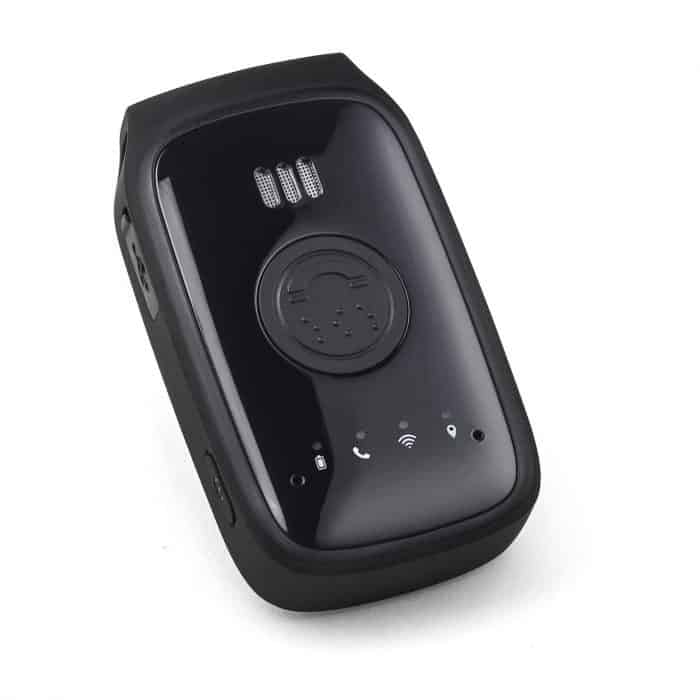
LifeStation Mobile LTE Medial Alert
When you’re researching at-home medical alert systems, you’ll notice that many offer either a landline or cellular connection. So what’s the difference? Well, the difference is night and day. We recommend a system that works best for you in communicating with the monitoring center so that you can get help immediately. Remember, seconds matter when it comes to an emergency.
With this in mind, landline alerts tend to be a bit slower, but they are also the cheapest. Cellular systems can be quicker. However, they use the provider’s cellular connection. Choose a cellular system only if you receive a strong signal in the area that you live.
While some brands require upfront payment for equipment, you’ll like that today’s best alert companies include the equipment for free with paid monitoring. So it’s usually pretty cheap to get started. Depending on the type of system you choose, you should expect to pay between $19.99 and $49.99 per month for potentially life-saving emergency coverage. Here’s a basic rundown of monitoring costs:
Some companies, like Life Alert, require miscellaneous fees like membership fees and activation fees. Of course, we’d rather not pay these additional costs, but sometimes it’s worth it. We recommend finding a system that doesn’t charge extra fees (and there are lots out there!). But if you do have to fork out a little more money to get started, just be sure it’s under $100.
We think a company that charges a dime more than $100 just to get started probably cares more about making money than helping seniors. So steer clear of those guys! Thankfully you can get the coverage you need without breaking the bank. Aim to keep your first bill (and subsequent bills) under $40-$50, even with fall detection.
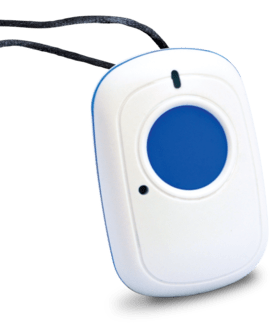
MobileHelp Fall Detection Neck Pendant
Fall detection is a popular add-on that we’ve tested extensively. It’s usually built into an alert device, and it automatically signals the monitoring center when it detects a slip or fall. Note that most alert companies charge a flat fee of $10 per month for fall detection. But keep an eye out for $5 monthly fall detection — as top brands like LifeFone offer it on-the-cheap.
FYI: Fall detection isn’t 100% accurate, but we still recommend getting this life-saving upgrade. For an extra $10 monthly, your alert system can call for emergency help, even if you’re not able to! That’s money well spent in our eyes.
You can also buy add-ons like a key lockbox to give first responders access to your home during an emergency ($29-$49), a Vial of Life to share your medical history and medications with first responders ($10), and extra help buttons for around your home ($10-$20). We advise you to go easy on the add-ons and upgrades, as you can always buy them as needed in the future.
When it comes to staying on the cutting edge and continuing to innovate in new and exciting ways, we’ve found there are just a handful of medical alert companies that are above the fray. Bay Alarm Medical, Medical Guardian, and Lively are three companies that are constantly introducing new technology and making advancements in senior safety.
While our list below of the latest (and greatest!) technology isn’t 100% exhaustive, it does cover the main advances in the medical alert industry as of late. Of course, the features and tech will continue to evolve over the years, as competition is sure to drive innovation. Thankfully it’s a win-win situation for seniors and caregivers alike. Here are a few of our favorite alert features.
| Feature | How It Works |
|---|---|
| Automatic Fall Detection | Fall detection uses the same electromechanical technology that airbags use to save lives. With a combination of accelerometers, sensors, and sophisticated algorithms, fall detection devices measure acceleration and changes in velocity. If the system senses a sudden change in speed or velocity, the alert system automatically contacts the monitoring center on your behalf. |
| GPS Location Services | GPS (or Global Positioning System) uses 30 satellites that orbit 12,500 miles above the Earth’s surface! Now, if you happen to slip and fall while out for a walk, your alert system with GPS will triangulate your exact location using those satellites. This allows a caregiver or emergency responders to find you in a jiffy. Many mobile cellular systems offer this. |
| Two-Way Communication | The top medical alert systems offer two-way communication, which can save a life in the event of a fall or other emergency. We’ve found that Bay Alarm Medical has one of the best two-way talk features in the industry. The high-output speakers and sensitive microphones allow you to talk with the monitoring center when it matters most. It’s especially helpful for seniors who lack mobility. |
| 4G LTE Connection | Connection speed matters. We’ve found that 4G LTE cellular technology offers the fastest connections. Another nice thing about 4G LTE is that you do not need a landline; in fact, this upgrade is typically cheaper than installing a landline in your home. Just expect to pay an extra $8-$12 per month for this upgrade. |
| Mobile App / Caregiver Tools | We think you’ll like that select alert systems let you track your loved one’s whereabouts using a modern mobile app. Other than location monitoring (using that neat GPS feature we talked about), you can review activity reports, use two-way talk, receive event notifications, etc. So if you’re looking for a little extra peace of mind, we recommend checking out the Caregiver Connection offered by Bay Alarm Medical or Philips Cares from Lifeline. |
| Fast Response Times | This doesn’t point to any specific technology, it’s more of a nod to the monitoring centers. A handful of alert systems (see our top 10 list above) are backed by CSAA Five Diamond monitoring centers. These centers are staffed with highly-trained emergency responders. Most offer response times under 30 seconds, with others clocking in closer to 10-15 seconds. Now that’s fast! |
| Environmental Monitoring | Whether it’s smoke from an electrical fire, or a carbon monoxide leak, you can bet that environmental hazards pose a serious threat to seniors.4 Thankfully, we’ve used a handful of medical alert systems that offer reliable environmental monitoring as an upgrade. You’ll pay a little extra for the sensors, and maybe $10 more per month for monitoring, but we think it’s well worth the cos |
| Languages Supported | English not your native language? You’re in good hands, as the best medical alert companies now support over one hundred different languages. So long as you choose a company like ADT Health that provides multilingual support, you’ll get the response and care you deserve no matter the language you speak. |
FYI: Many medical alert devices use Bluetooth to ensure a reliable connection. Interested in a Bluetooth-enabled system? Check out our in-depth Bluetooth mobile medical alert guide.
Very few companies require lengthy contracts these days, and most don’t require any contract at all. That’s really good news. The way we see it, aging is an uncertain new stage of life, and companies should offer flexibility in their terms and conditions. So keep in mind there’s no need to sign a contract, as there are loads of top quality medical alert systems that offer affordable month-to-month deals.
You’ll also want to look for other customer-friendly policies like money-back guarantees, free activation, free shipping, and the like. The truth is, alert systems are becoming more popular every day, so companies are scrambling to secure their share of the market — which means deals and discounts for folks like you!
We offered information on Medicare coverage in bite-sized pieces above. You may be thinking: doesn’t this cover everyone using medical devices? The vast majority of individuals who use or might benefit from using a medical alert device receive their medical benefits through some form of Medicare. But not everyone. Below are a few other groups of people who might be seeking coverage for medical alert devices.
(One other group not yet mentioned are individuals using Veteran’s benefits. We will discuss these benefits in more detail below.)
The three groups of individuals mentioned above use either job-based insurance plans, plans bought directly from insurance companies or plans purchased through the “marketplace” set up by the Affordable Care Act (ACA).
We have noticed that health insurance plans are covering more and more preventative services than they have done in years past. So whether private insurance companies completely cover or discount medical alert devices is a great question to ask. Unfortunately, the answer for most insurance companies is no, medical alert devices are not covered by insurance. We do recommend contacting your provider to learn about the specifics in your policy.
From what we’ve seen, the Veteran’s Administration (VA) partners with two medical alert companies and offers specific devices sold by these companies to eligible veterans free of charge. Excellent news, right?
Here’s the nitty gritty:
LiveLife Mobile Alarm offers a wearable device that provides a great basic level of protection. Their pendant is worn around the neck and is programmed to text and call designated contacts including 911. Because it connects to a 4GX network, it also includes two-way talk and location detection. One thing to note: it doesn’t include (and this is an integral piece of most other systems) the ability to connect with a certified, 24/7 monitoring center. However, the device does include fall detection, a feature that we think is very important.
The other available device is offered through MedEquip Alert. Worn as a necklace or clipped to a belt, it runs on an LTE wireless service so can be used both at home and while away. The device does include two-way talk with a 24/7 monitoring center. We also like the GPS tracking. It does have one disadvantage – no fall detection.
Though each system is missing one or two features found in other systems, we love that the VA provides a basic level of safety and protection to our older veterans. As you can see above, full insurance coverage of medical alert devices is uncommon – it definitely is not a standard insurance benefit. It is great to see that this benefit is going to our veterans.
And, the VA offers one more option for seniors looking for medical alert systems. If a veteran prefers another system, perhaps one that is more comprehensive, no problem. VA Medical Health Care will provide partial coverage.
If you’re a military veteran or are caring for one, we recommend visiting our roundup of the best medical alert systems for veterans for more tips on aging with confidence.
If you’re on the fence about getting an alert system for yourself or a loved one, we’d like to encourage you to go for it. These devices will almost certainly give you greater peace of mind, and they could even save a life.
As far as our recommendations on individual devices and alert companies, we’ve revealed those above in our ‘Best Medical Alerts Systems’ list. You really can’t go wrong with any of those brands, but a few of our favorites are Bay Alarm Medical, Medical Guardian, and LifeFone.
The truth is, any protection that helps you age safely and with confidence is better than no protection at all. In other words, any alert system is better than no alert system! That’s an important point we like to emphasize. Thankfully, you can find alerts that cost less than $20 per month, and without contracts or any hidden fees to worry about (we personally can’t stand hidden fees).
All in all, medical alert systems have never been more accessible, affordable, and easy to wear. We hope this comprehensive guide has enriched your search and has helped you to narrow down your options to find the right fit!
It depends. We typically recommend fall detection for seniors who are prone to slip and falls, like seniors with balance problems, bone & joint issues, diabetes, vision loss, and the like. If you or your loved one is still active at home (and away from home), fall detection might not be necessary. But it’s an individual choice that you have to make. The good news is that it only costs an extra $10 per month. And since nearly 3 million older people fall every year and end up in the ER, we think it’s an incredibly important feature to have.
You should certainly consider an alert system for your spouse or partner. After all, if you two aren’t together if/when an emergency occurs, one of you will get the short end of the deal. The good news is that most medical alert companies offer coverage for a spouse or other household occupant at a greatly reduced price. Sometimes they’ll even offer additional coverage for free. So in our eyes, there’s no reason to forego coverage for your spouse or partner.
As experts, we always recommend a full-on waterproof alert device. We mentioned before that most falls happen in the bathtub or shower, so you should think of the bathroom as a hot-spot for medical emergencies. Now, if you go with a water-resistant pendant (or another wearable), it won’t function when submerged or exposed to heavy water use. A waterproof help button, on the other hand, will keep you protected even when submerged. So it’s easy to see the advantage of waterproof alert systems. That said, it’s best to check with the manufacturer to clarify the capabilities of their medical devices before deciding on which one is right for you.
Unfortunately, no they aren’t covered by Medicare at this time. Since Medicare does not consider these devices as a “medical necessity,” they typically are not covered by Medicare Parts A and B. Obviously, the majority of seniors and leaders in the medical alert industry (including us!) argue that alert systems are absolutely a medical necessity. But don’t expect your Medicare plan to cover your monthly monitoring fee. With that said, in some cases, Medicare Part C does cover alerts. It’s also worth noting that certain healthcare reimbursement accounts (HSA’s) cover alert devices as well.
That’s an easy one to answer! We recommend you get an at-home system if you (or your loved one) spends the majority of your time at home. However, if you live a more active lifestyle and leave home often, we recommend getting a cellular mobile alert system.
NCBI. Chaudhuri, S. et. al. (October, 2014). Fall Detection Devices and their Use with Older Adults: A Systematic Review. https://www.ncbi.nlm.nih.gov/pmc/articles/PMC4087103/
Library of Congress. (Accessed July 19, 2020). What is a GPS? How does it work? https://www.loc.gov/everyday-mysteries/item/what-is-gps-how-does-it-work/
LTE Telecommunication. Wikipedia. (Retrieved July 20, 2020). https://en.wikipedia.org/wiki/LTE_(telecommunication)
National Institute of Standards and Technology (NIST). Butry, D.T; et. al. (2017, August 22). NIST Study Suggests Frailty Makes Elderly More Likely to Die in Home Fires. https://www.nist.gov/news-events/news/2017/08/nist-study-suggests-frailty-makes-elderly-more-likely-die-home-fires